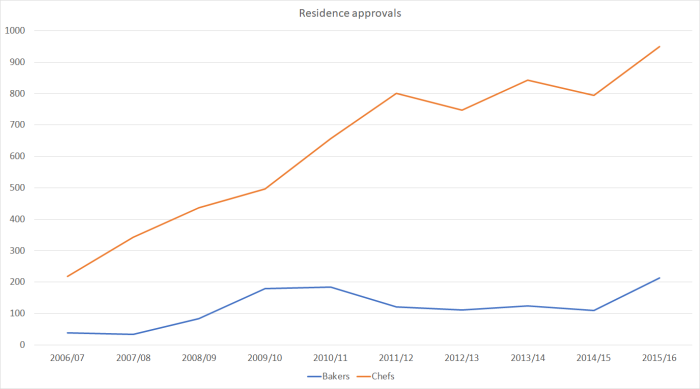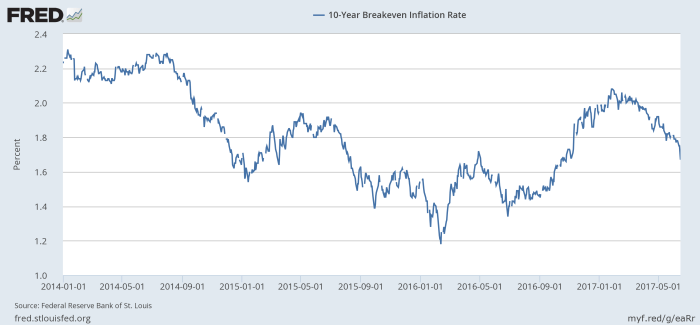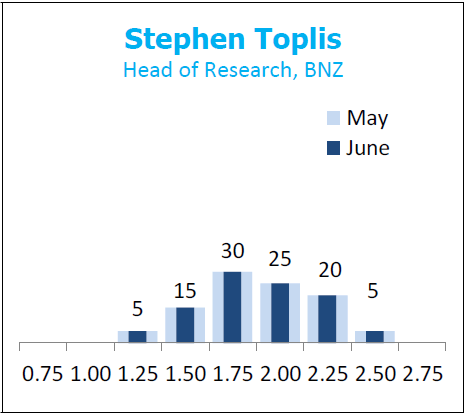Earlier this week the Reserve Bank published a Statement of Intent for the next three years (starting tomorrow). The preparation and publication of these documents is now a statutory requirement. All manner of government agencies have to produce them. In principle, such statements are part of a democratic accountability process. In practice, they are mostly bureaucratic hoop-juumping exercises, containing very little that is both new and valuable, and one has to wonder if anyone in, say, Treasury has ever done a proper cost-benefit analysis to assess whether citizens are really getting value for money.
I haven’t put myself through the pain of reading any other agency’s Statement of Intent, so I have no idea whether the Reserve Bank’s SoI is better or worse than the average. But on this particular occasion, the Reserve Bank’s effort is almost certainly more pointless than average. The new SoI covers the three years to June 2020, and yet the Governor – chief executive and sole decisionmaker at the bank, by statute, will be gone in three months’ time, and his deputy will follow him out the door a few months later. Whatever the merits of Graeme Wheeler’s views on the priorities for the Bank over the next few years, they are really no more than (a) descriptions of what the Bank is doing at present, and (b) advisory opinions which his successor can simply ignore if s/he chooses. When Cabinet ministers talk about the government’s plans for next year, there is at least (say) a 50/50 chance their party will be in office to carry those things through. Graeme Wheeler won’t be. Governance models shouldn’t be devised to fit bureaucratic practice and preferences, but an SoI might make a little more sense if the Bank were governed by a Board, the members of which don’t all change at one time (as most crown entities and similar agencies are).
I’m not going to bore myself, or you, with a detailed commentary on the SoI, but a couple of things did catch my eye (as well as an error on p34).
The first, perhaps trivial, one was under “People and culture”. There we read
Embed the Bank’s high-performance culture
The Bank has largely established its high-performance frameworks. The priority now is to deliver stronger management performance and greater staff engagement. This will be achieved through the greater empowerment and skill development of staff, and accountability for results by managers.
Whatever a “high-performance framework” is, it doesn’t yet seem to be delivering results. After almost five years as Governor, the most that appears to be able to be said is that the “frameworks” are in place, but the outcomes – “stronger management performance and greater staff engagement” – apparently are not. Perhaps the Board will feel prompted to comment on that in their Annual Report on the Governor’s performance?
The second point I noted was something missing. Whether in the list of strategic priorities for the next few years, or the list of what the Economics Department is working on this year, there is nothing at all about preparing for the next recession. That is so even though the OCR is now 1.75 per cent, years into this growth phase. They simply don’t seem to be taking seriously the limitations of conventional monetary policy, even though our central bank (and Treasury) have been forewarned and have had much more time than most to prepare. It is an abdication of responsibility, and citizens (not central bankers) are the ones who risk paying the price. There is no hint of looking again at the inflation target, or looking at whether levels-targets might provide greater resilience, and no hint of any work looking at easing or removing the technological constraints that cause the near-zero lower bound on nominal interest rates, and which arise from the Bank’s statutory monopoly on note issuance.
The third point I noted was this
Policy Target Agreement renewal and governance review: engage effectively with external agencies on the upcoming renewal of the agreement and the review of the Bank’s monetary policy governance framework.
Unfortunately, there is no suggestion of engaging with the public on issues around the next PTA (unlike, say, the appproach taken in Canada), and no suggestion of any serious research programme around the appropriate specification of the target(s). I was modestly encouraged to see the reference to “the review” of the monetary policy framework. It suggests that the Reserve Bank has some work actively underway in this area, perhaps to complement or react to the, as yet unpublished, Rennie review. On the other hand, nowhere in the SoI is there any recognition that the decisionmaking issues are at least as important around financial regulation (because there is nothing like the PTA to constrain gubernatorial choices and whims), and no suggestion of any review of the question Rennie was also asked to look at, as to whether the Bank should retain primary responsibility for advice on its own legislation (an unusual arrangements for an entity that isn’t a core government department).
The fourth item I noticed was something mentioned in the Minister of Finance’s annual Letter of Expectation to the Governor, also published this week. In that, mostly, rather pedestrian letter, in which the Minister seems unbothered about the Governor’s repeated failure to keep core inflation close to target, the Minister does make a request
I expect the Statement of Intent to refer to the Bank’s plans to take forward its regulatory stewardship responsibilities over the coming years.
Regulatory stewardship has specific bureaucratic meaning. From Treasury’s website
Regulatory stewardship is a responsibility of government regulatory agencies. It involves them adopting a whole-of-system, lifecycle view of regulation, and taking a proactive, collaborative approach, to the monitoring and care of the regulatory system(s) within which they have policy or operational responsibilities.
If that sounds wordy and bureaucratic to you (as it does to me), there is a separate document – only seven pages long – outlining government expectations of regulatory agencies. I liked this bit.
The government expects any regulatory system to be an asset for New Zealanders, not a liability.
By that we mean a regulatory system should deliver, over time, a stream of benefits or positive outcomes in excess of its costs or negative outcomes. We should not introduce a new regulatory system or system component unless we are satisfied it will deliver net benefits for New Zealanders. Similarly, we should seek to remove or redesign an existing regulatory system or system component if it is no longer delivering obvious net benefits.
But despite the Minister of Finance’s explicit request, there appears to be almost nothing in the Reserve Bank SoI on the Bank’s regulatory stewardship responsibilities. At the end of a list of 12 initiatives in the regulatory area, suggesting it was added late after the Minister’s request, there is this
develop plans to take forward the Bank’s regulatory stewardship
responsibilities over the coming years.
But they currently appear to have no developed sense of how the Bank, as a major regulator (operating to considerable extent on what is, in effect, the whim of an individual), should operate in a way consistent with regulatory stewardship guidelines first put in place some years ago. Consistent with that, the “success measures” they list bear little relationship to anything in the statement of expectations of good regulatory practice. And, as far I can I could see, there was no suggestion anywhere of looking to get rid of redundant, or excessively costly, regulation. The mindset doesn’t seem to encompass that possibility,
But in many ways what most interested me, and surprised me a little, was the Governor’s statement that the Bank’s vision is “of being the best small central bank”. It was a line one used to hear from the Governor from time to time when I worked at the Bank (somewhere I think I still have a copy of a paper that attempted to elaborate the vision), but it hasn’t been seen much outside the Bank, and if I’d given the matter any thought at all I guess I’d have assumed the goal had been quietly dropped. Apparently not.
As an aspiration, it is one that has always puzzled me.
It is good to aim high I suppose, but isn’t it really for the owners to decide how high they want the Reserve Bank to aim? Then it is the manager’s responsibility to deliver. I’ve not seen the Minister ask the Reserve Bank to be the “best small central bank”. That isn’t just an idle point, because the ability to be the best will depend, at least in part, on the resources society chooses to make available to the Reserve Bank. There are some gold-plated, extremely well-resourced, central banks around, particularly in countries that are richer than New Zealand. I suspect New Zealand probably skimps a little on spending on quite a few core government functions including the Reserve Bank (but I’m probably somewhat biased, having spent my life as a bureaucrat), but that is a choice. If we asked of the Reserve Bank what we ask of it now, but made available twice as many resources, we should expect better results. As it is, there are limitations to what we should expect from 240 FTEs, covering a really wide range of responsibilities (the Swedish central bank, for example, appears to have about 40 per cent more staff, for a materially narrower range of responsibilities).
And then I’ve been a bit mystified as to who the Governor proposes to benchmark the Reserve Bank against. I was pretty sure the Reserve Bank of New Zealand excelled relative to, say, the Bank of Papua New Guinea or the Reserve Bank of Fiji. But they are much poorer countries. And so I tried to make a list of advanced country small central banks. There was Norway, Sweden, Israel and the Czech Republic and then the list started to thin out rather quickly. There was Iceland of course, but the population of Iceland is about 330000; in relation to our 4.8 million that is about how we compared with the UK. The Bank of England is demonstrably better than our Reserve Bank, and on many dimensions our central bank really should do better than Iceland’s. Of course, there are lots of small countries in the euro, but individually they don’t have much clout, and can’t really be meaningfully compared against central banks of countries that make policy for themselves. There was also Singapore and Hungary – not too different in population from New Zealand, but neither are from countries that represent liberal democracy at its finest.
Unfortunately I couldn’t think of a single dimension on which I would regard the Reserve Bank of New Zealand as being better than the Norwegian or Swedish central banks. (The Swedish central bank is so transparent they even published the details of their staff engagement survey, in English, so that we know that 73 per cent of staff consider the Riksbank “close to being a perfect employer”). Perhaps we shouldn’t be surprised. Norway, in particular, is much richer than us. What of the Israeli or Czech central banks? They are countries more similar to us in GDP per capita. It is hard for outsiders to evaluate, but from what I’ve read of those central banks, and what I could find on their websites – whether around governance, transparency, policy, or the range and depth of research – it wasn’t obvious why one would think our Reserve Bank was doing better.
Given that the Governor has now restated the vision of having the Reserve Bank as the best small central bank, I assume he must have some benchmark comparators in mind, and assume they must have done some work to assess how they compare. Since I assume any such documents would be readily to hand, I’ve lodged a request for them.
I’m not sure that “best small central bank” is the appropriate aim. But we should want an excellent one. At present, unfortunately, we are a long way from that (not in all cases for reasons under the control of the Governor). One could think of:
- a governance model that is out of step with both international practice, and with New Zealand practice for other governent agencies. Far too much vests in one person, no matter how good that person may be,
- a Board, which exists (at least on paper) to hold the Governor and Bank to account, and yet which is practice seems to see its role primarily as providing cover for the Governor,
- serious monetary policy misjudgements (eg 2014) and while misjudgements are an inevitable part of the game, very little evidence of self-critical scrutiny and evaluation,
- an approach to transparency which emphasises what the Bank wants us to know, not what citizens might reasonably need to hold a powerful agency to account,
- relatedly, an obstructive approach to compliance with the Official Information Act,
- little or no published research or analysis on major areas of the Bank’s discretionary policy activities (prudential regulation),
- infrequent, and mostly unenlightening, speeches,
- and an approach to criticism that appears to have been exemplified recently in the sustained (apparently somewhat successful) campaign by the Governor and his senior staff to “silence” (materially alter and content and tone) of commentary by a leading economist who happens to work for an institution the Reserve Bank regulates. Was that the collective wisdom of the much-vaunted Governing Committee working well?
It is the sort of list that candidates applying to become the next Governor – applications close a week from now – should be reflecting on pretty carefully. We deserve something considerably better than we are getting.
Of course, it isn’t that the Reserve Bank is necessarily much different than many of our other policy agencies and institutions. A very senior figure observed to me recently that the climate for good policymaking was now worse in New Zealand than that person had ever known it. There may be isolated exceptions, but around too much of official Wellington there seems to be an unwillingness to ask hard questions or do hard analysis, or put up difficult options, Instead, the incentives seem to reward a desire to simply go along, and fit in, or devise schemes that look good for some quick publicity, however little merit they have longer term. And all the while our economic performance continues to disappoint, But no one seems to much care, so long as the minister of the day is happy. And there is little sign that ministers – or their opposition counterparts – care, or want anything much different.
I was reading yesterday an article about the current global political malaise. Near the end was a quote from Edmund Burke, writing about the government of George III. He wrote
“it was soon discovered that the forms of free, and the ends of an arbitrary Government, were things not altogether incompatible”
In some ways, it isn’t so unlike modern New Zealand. On paper, many of our institutional arrangements look strong – thus, for example, the Reserve Bank can repeatedly boast how transparent it is – but in too many cases the substance has been emptied out, and just the forms are left behind.








